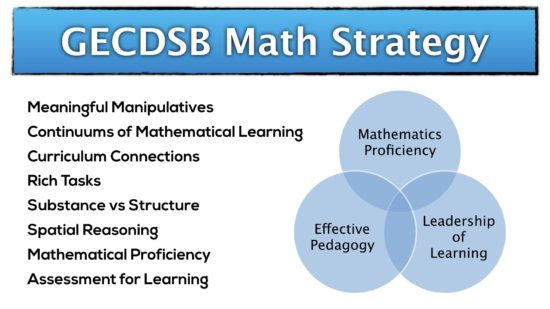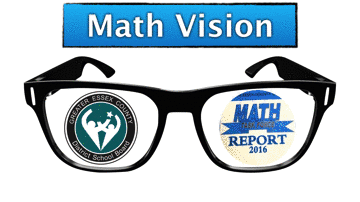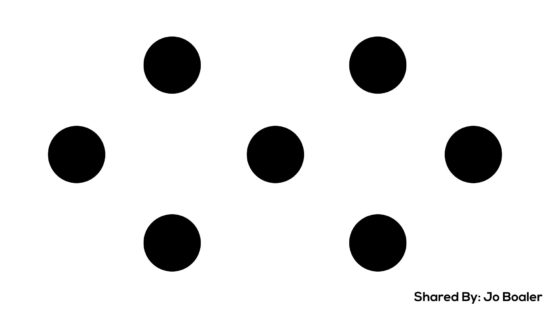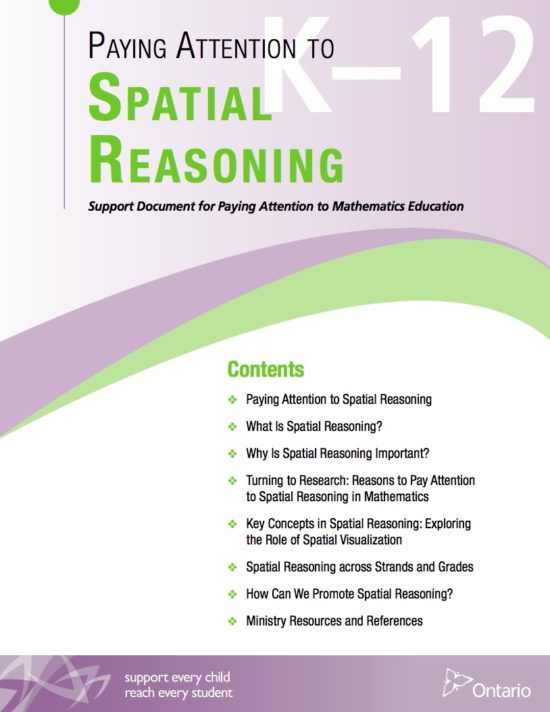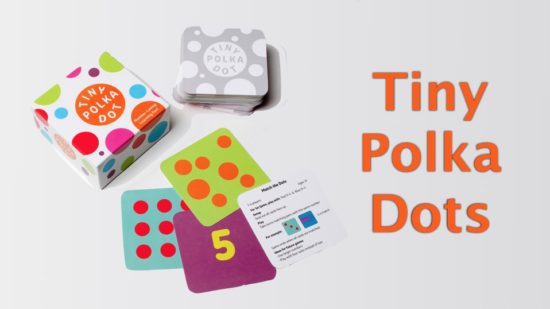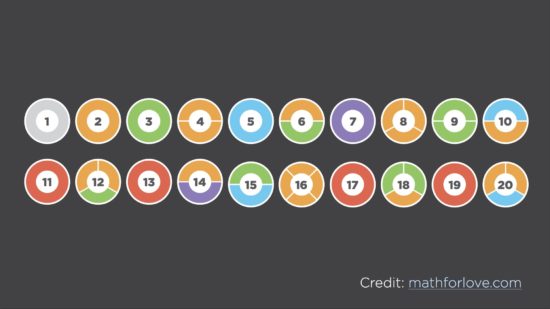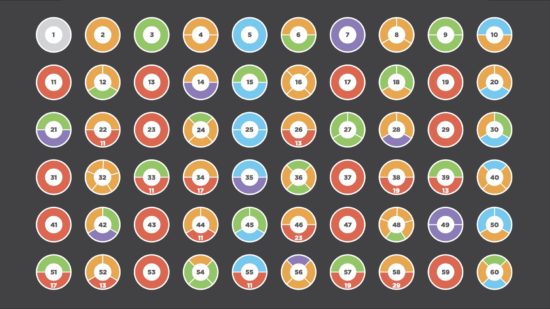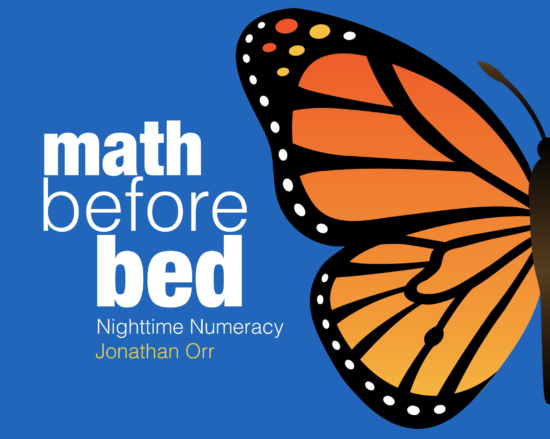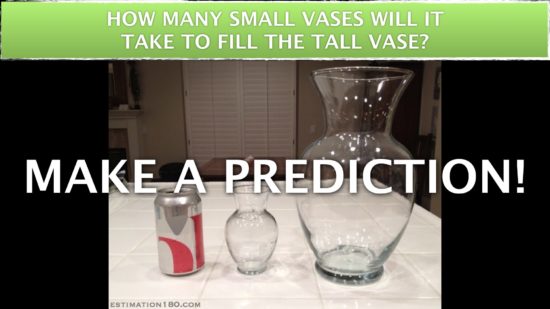GECDSB Mathematics Professional Learning Session for Parents
Tuesday May 16th, 2017
Thank you to Dr. David Suzuki Public School for inviting me to join parents in a conversation around mathematics education. I hope you all found the morning useful and enjoyed your time visiting each classroom!
Presentation Slide Deck
Feel free to access the slides from today’s presentation below:
Warm-Up: How Do You See the Dots?
We did a quick Dot-Card warm-up asking you to visualize how you saw a series of dots on the screen. We went around the table and it seemed that everyone had a different perspective.
Here’s some of the ways you might have visualized the dots:
Paying Attention to Spatial Reasoning
While we didn’t explicitly explore the Paying Attention to Spatial Reasoning document, much of our focus today was about how we “see” the math. Spatial Reasoning is a better predictor of mathematical success than mathematical or verbal skills.
Download the document in PDF form below:
Math Myths: Disspelling Misconceptions
We spent some time talking about some Math Myths including the notion that there is a New Math vs. Old Math and the misconception that using your fingers is a sign of mathematical weakness.
To address the New vs. Old debate, we looked at the Concreteness Fading Model. Here are a couple blog posts that might be helpful as you try to understand how we attempt to build conceptual understanding through the concreteness fading model as we head towards procedural fluency:
- Counting and Quantity Principles
- Progression of Multiplication
- Progression of Fractions
- Progression of Proportional Reasoning
- The Beauty of Elementary Mathematics [Ignite Speech]
Also, there are some articles on “Finger Fluency” to dispel the myth that counting on your fingers is bad:
- Why Kids Should Use Their Fingers in Math Class
- Why Kids Should Keep Using Their Fingers to do Math
- Finger Discrimination vs. Finger Counting – A White Paper & Discussion – YouCubed
Incorporating Math At Home
We also looked at a bunch of resources to consider for incorporating math at home. Here are those resources as well as a bunch of other links you might want to consider as well!
Tiny Polka Dots
We briefly described Daniel Finkel’s game, Tiny Polka Dots and discussed the progression from dot cards to ten frames to different sized dots (abstraction) and conceptual subitizing (different coloured dots).
While we gave one set away in a draw, you can visit the site to buy the game from Amazon or purchase the $5 downloadable PDFs.
Prime Climb
We later explored this image:
After taking some time to notice and wonder in your groups, participants shared out what they noticed and wondered. Quite a bit of excitement filled the room. After making a few predictions like “what does the number 21 look like? 36? etc.” we shared out our thinking.
We then let you see this image:
These images are from Daniel Finkel’s Prime Climb game from his website, LoveforMath.com.
Math4Success offers some blog posts [here, here and here] involving ways that you might consider using these images in your classroom.
Daniel Finkel’s TED Talk: Five Principles of Extraordinary Math Teaching
We then watched Daniel Finkel’s inspiring TED Talk:
Math Before Bed
The benefits of reading stories to our children at nighttime have been shared countless times over, and for good reason. Reading improves literacy skills.
Why is it that we don’t do math with our children before bed?
Math Before Bed is a collection of prompts that can inspire mathematical discussions that you and your children can have before bed, at dinner, or anytime. Each page in this book shows you and your child a perplexing problem. Sometimes there is one right answer and sometimes there are many right answers The purpose of each question is to generate a discussion about HOW you determined an answer.
If you find one answer, try to find another.
You could complete one page a night, or many pages.
Estimation180.com
The site creator presents his students with an estimation challenge each day of the school year. He loves helping students improve both their number sense and problem solving skills.
He’s kind enough to share the estimation challenges with you and your sons/daughters/students.
What a great tool to use at home to inspire math conversations with your children!
Here are some other great sites we didn’t explicitly explore, but I promised I would share on the resource page:
- Which One Doesn’t Belong? – Find a reason why each one doesn’t belong.
- Would You Rather? – Choose a path. Justify it.
- Visual Patterns – How do you see it growing?
- Fraction Talks – Inspire interesting fraction discussion.
iPad Math Apps
[appshortcode the_query=”post_type=ipadapps&p=19079″]
[appshortcode the_query=”post_type=ipadapps&p=19102″]
[appshortcode the_query=”post_type=ipadapps&p=19105″]
[appshortcode the_query=”post_type=ipadapps&p=19109″]
Virtual Math Manipulatives and Apps
Although we didn’t spend any time here, I think it’s important that you know these (and many other) free tools are available for utilizing at home:
- Math Learning Center – Web Based Apps for SMARTBoard / Computer
- Mathies.ca – Interactive Math Apps and Math Resources
- NIRCH – Enriching Mathematics – Rich tasks
- 3 Act Math Tasks – Rich tasks
- YouCubed – Rich tasks
I was truly honoured to spend some time at Dr. D. Suzuki Public School today for your The Life of a Suzukian Mathematician! day. I hope we get to spend some more time together real soon.

